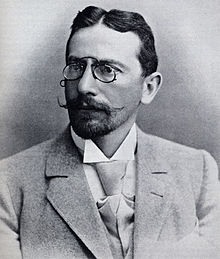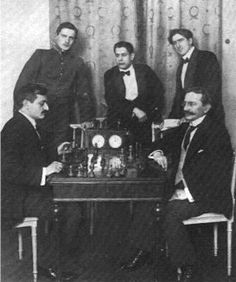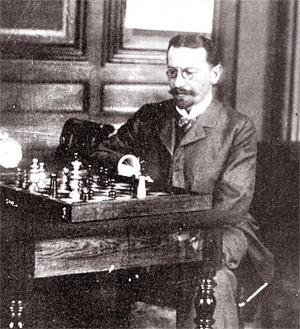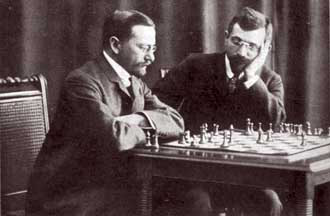Tarrasch




Siegbert Tarrasch (5 March 1862 – 17 February 1934)
was one of the greatest chess players and writers of the late 19th
and early 20th century.
He came from a Jewish family, having four siblings. He
lost a son in World War I and despite his patriotism he was persecuted in the early
years of the Nazi regime.
From Tarrasch derives the best-known and many times quoted
sentence: „Chess, like love, like music, has the power to make men happy.”
The Tarrasch Defence (used against the Queen's Gambit)
is a chess opening named after him.
In 1903, he published his famous article in the German
Die Woche magazine in which he
recommended chess as a school subject because, according to him, all possible actions
can be taught on the table. In this article he showed the Austerlitz battle through
the game of the world champion Emmanuel Lasker’s from 1896.
He was a doctor by his profession and perhaps the best
player in the world in the early 1890s. In 1892, he refused the opportunity to challenge
the regnant world chess champion, Wilhelm Steinitz, referring to his medical practice.
Not a long time later in 1893, in St. Petersburg, Tarrasch
drew a hard match against Stenitz’s challenger Mikhail Chigorin (+9-9=4).
He won four strong tournaments: 1889 Breslau, 1890
Manchester, 1892 Dresden and 1894 Leipzig.
In 1894, after Emmanuel Lasker had become the champion,
Tarrasch couldn’t cope with the situation. Fred Reinfeld wrote: "Tarrasch was
destinied to play second fiddle for the rest of his life." It can be said
as Lasker scored much more against common opponents, for example Chigorin;
Tarrasch had +2 in 34 games while Lasker scored +7 in 21. Despite this,
Tarrasch remained a powerful player, beat Frank Marshall in 1905 (+8-1=8),
then, in 1907, Ostende, he won against Schlechter, Janowski, Marshall, Burn and
Chigorin as well.
Anyway, the two masters were not keen on each other.
As a story claims, when they were introduced at the opening of a championship match
in 1908, Tarrasch clicked his heels, bowed stiffly, and said, "To you,
Dr Lasker, I have only three
words, check and mate" – then left the room. Finally,
when Lasker accepted a title match, he triumphed confidently against Tarrasch
by+8-3=5.
Tarrasch defended his place among the world leading players
for a long time. In 1914, in the extremely strong St. Petersburg Tournament he
finished fourth place, only the world champion Lasker and the future world champions
José Raúl Capablanca and Alexander Alekhine overtook him. His victory against Capablanca
in the 19th round, though less famous than Lasker's win against Capablanca
the round before, was an indispensable precondition for Lasker to become so famous.
This competition was probably Tarrasch’s swan song because he couldn’t achieve such
success later on, although he took part in highly rating? games.
According to Chessmetrics historical rating, his highest
score was 2824 and his best achievement in the ranking was 2nd place
between October 1890 and November 1906 in 11 different months.
Sources: https://hu.wikipedia.org; https://en.wikipedia.org;
